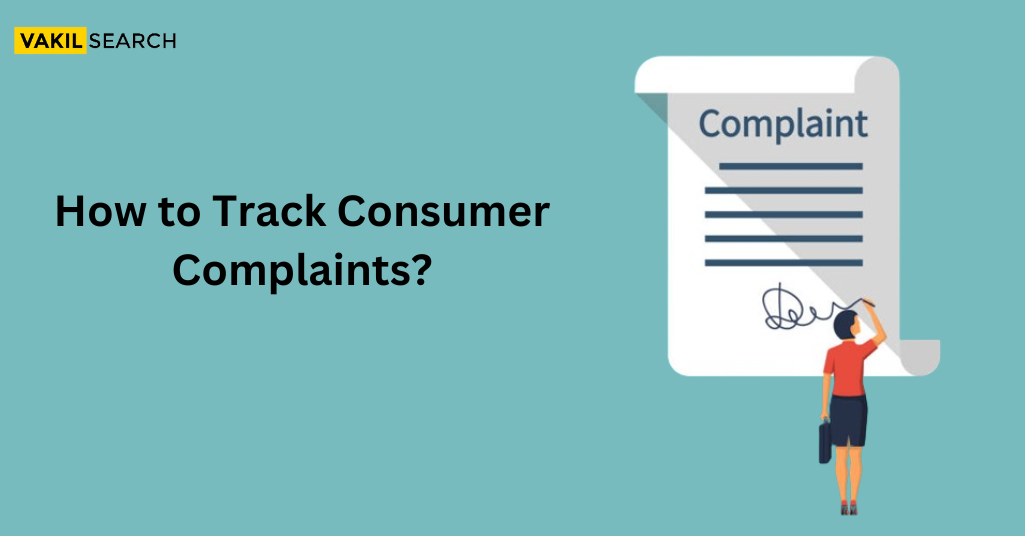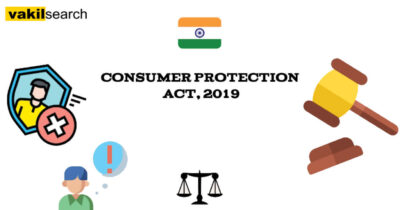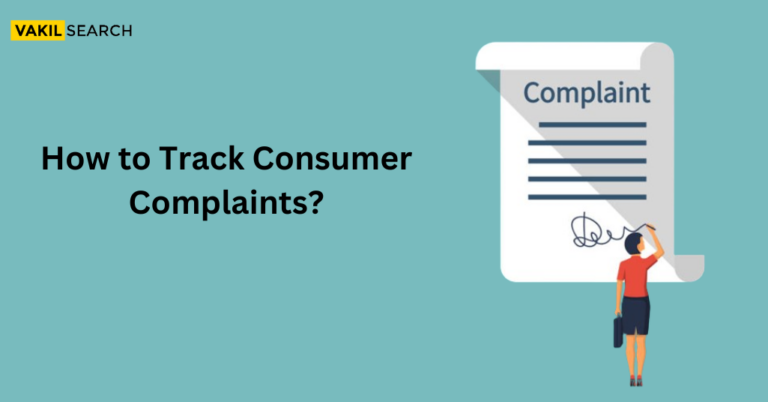Discover effective methods to track and address consumer complaints, ensuring customer satisfaction and brand reputation management. Get in touch with our experts to know more!
Introduction
In the world of consumer complaints, understanding the problems of product or service issues, compensation, and remedies is key. This blog simplifies the process, offering a user-friendly approach to track and address complaints effectively. Get into the distinct realm of consumer courts in India, renowned for providing swift legal support and discover your consumer rights safeguarded by the Consumer Protection Notice Act of 1986. Know the secrets to prompt resolutions and ensure a smooth consumer experience through the insights shared in this consumer-friendly blog on how to track consumer complaint.
What is the Meaning of Tracking Consumer Complaint?
Tracking consumer complaints refers to the systematic process of monitoring, managing, and following up on grievances or concerns raised by customers regarding products or services. It involves keeping a close eye on the progress and resolution of each complaint from its initiation to its final resolution. This encompasses various stages, including the submission of the complaint, investigation, communication with the consumer, and the implementation of necessary actions to address the issue. Effectively tracking consumer complaints is essential for businesses and organizations to ensure timely and satisfactory resolutions, enhance customer satisfaction, and identify areas for improvement in their products or services.
Advantages and Options for Resolving Consumer Complaints
- You will be refunded the entire amount of your purchase.
- Any issues with products or services will be addressed and resolved.
- Damaged items will be replaced to ensure your satisfaction.
- All costs associated with filing the complaint will be reimbursed in full.
- You will be compensated for any losses or distress, including mental anguish.
- The vendor may be instructed to cease unfair trade practices.
- Complaints can be registered at the place of purchase or service receipt, as well as in the seller’s district or state.
- If the sale or purchase was conducted online, complaints must be submitted through the designated venue specified in the terms of service, typically the seller’s website.
Track Consumer Complaint – What Is Published and When Is It Published?
Track Consumer Complaint typically refers to the process of monitoring and managing consumer complaints within a business or organisation. It involves keeping a record of the submitted complaints, their status, and the actions taken to address them. As for ‘What is published and when is it published?’ in the context of tracking consumer complaints, it depends on the practices of the business or organization. Information related to consumer complaints may be published in the form of periodic reports, updates on resolved issues, or public statements addressing common concerns. The timing of such publications varies and can be influenced by factors like the severity of the complaints, regulatory requirements, or the company’s transparency policies. Ideally, businesses should communicate with consumers regularly, providing updates on the status and resolution of complaints to maintain transparency and build trust.
Understanding and Analysing Consumer Complaint Data
It’s common for products, issues, or companies to have complaints, even if not all are formally submitted. Consumers may experience harm without necessarily filing a complaint, making it essential to understand the dynamics surrounding complaints and their submission.
Consideration of Company Size and Market Share:
When assessing the volume of complaints against a company or product, it’s crucial to consider the firm’s size and market share. Larger businesses may naturally accumulate more complaints, and the number of complaints should be evaluated relative to the consumer base. Additionally, taking regional population into account provides a more accurate understanding of the complaint volume.
Integration with Public and Private Data Sets:
For a comprehensive perspective, we recommend merging complaint data with public and private datasets. This approach broadens the analysis, offering insights beyond the immediate scope of consumer complaints.
Patterns of Viewing and Timely Responses:
Considering the requirement for businesses to respond within 15 days, recent complaint data and trends might not capture all eligible complaints. Timely responses are crucial in understanding ongoing issues and addressing them promptly.
Click here to learn: How to Raise a Complaint in Consumer Court
Analysing Complaint Narratives:
Consumers express their experiences in complaint narratives, providing valuable insights. While we present these narratives, it’s essential to note that we neither endorse the opinions shared nor guarantee the veracity or objectivity of the experiences.
Release of Complaint Narratives:
Until personal information is appropriately removed, complaint narratives eligible for release won’t be included in the most recent complaint data. This step ensures privacy and compliance with data protection regulations.
This organised structure helps readers navigate through different aspects of consumer complaints, from understanding their nature to the considerations in analysis and the handling of complaint narratives.
Understanding and Utilising Complaint Data
Section 1: The Importance of Complaints Data
Complaints play a vital role in comprehending market issues and ensuring the regulation of consumer financial products and services in alignment with current federal consumer financial laws. They serve as a means to effectively enforce these laws, while also playing a crucial role in informing and empowering consumers to make informed and wise financial decisions.
Section 2: Information Downloading for Comprehensive Analysis
To harness the full potential of complaint data, users have the option to export their results and download specific subsets of data. For instance, filtering the entire dataset allows users to extract information related to all complaints for a particular product. Additionally, the option to download all complaint data is available in both CSV and JSON file formats, facilitating convenient access and analysis.
Section 3: Database Updates for Enhanced Information Accessibility
In April 2017, significant updates were made to the arrangement of goods, sub-items, issues, and sub-issues within the database. Notably, the consumer’s initial choices for product, sub-product, issue, and sub-issue, based on the selections made at the time of complaint submission, are now prominently displayed in the consumer complaint database. This enhancement ensures a more transparent and user-friendly experience when accessing and interpreting complaint data.
Check here to file a legal notice under consumer protection act 2019
How Long Does it Take to Track a Consumer Complaint?
A copy of the complaint is forwarded to the company specified on the complaint form within 10 to 14 business days of our office receiving the complaint and supporting materials. Following that, a letter is sent to the complainant identifying the person who has been given responsibility for their case.
How quickly the Office responds determines what course of action it will take next.
The speed of the company’s answer will affect the Office’s capacity to decide on the next legal step. A complaint is typically resolved in 9 months, however it could take longer depending on the situation.
Conclusion
In essence, efficiently tracking consumer complaints is integral to maintaining customer satisfaction and upholding a positive brand reputation. By navigating the legal landscape, understanding consumer rights, and implementing effective tracking mechanisms, businesses can swiftly address grievances, fostering trust and loyalty. This blog underscores the strategic significance of a streamlined complaint tracking system, asserting its role as a key driver for success in a consumer-centric market.










